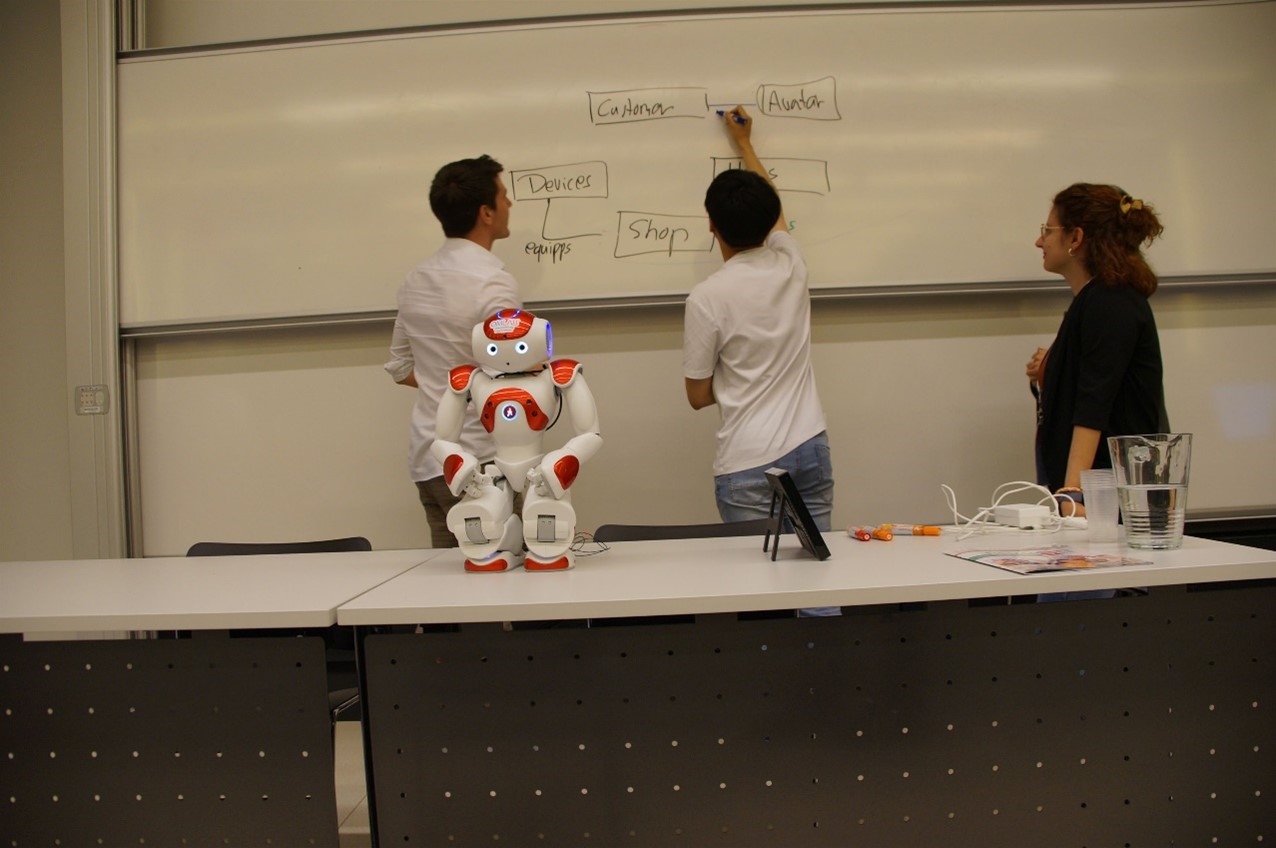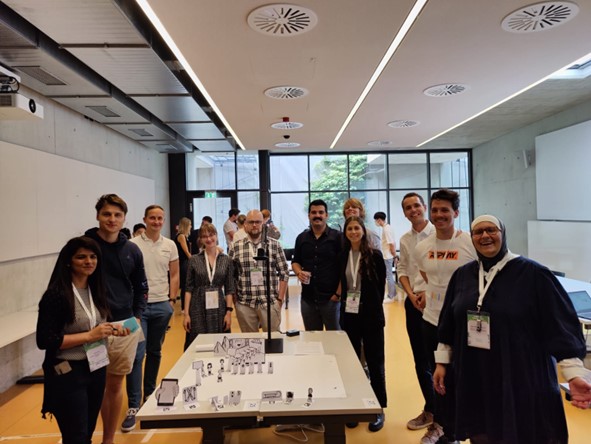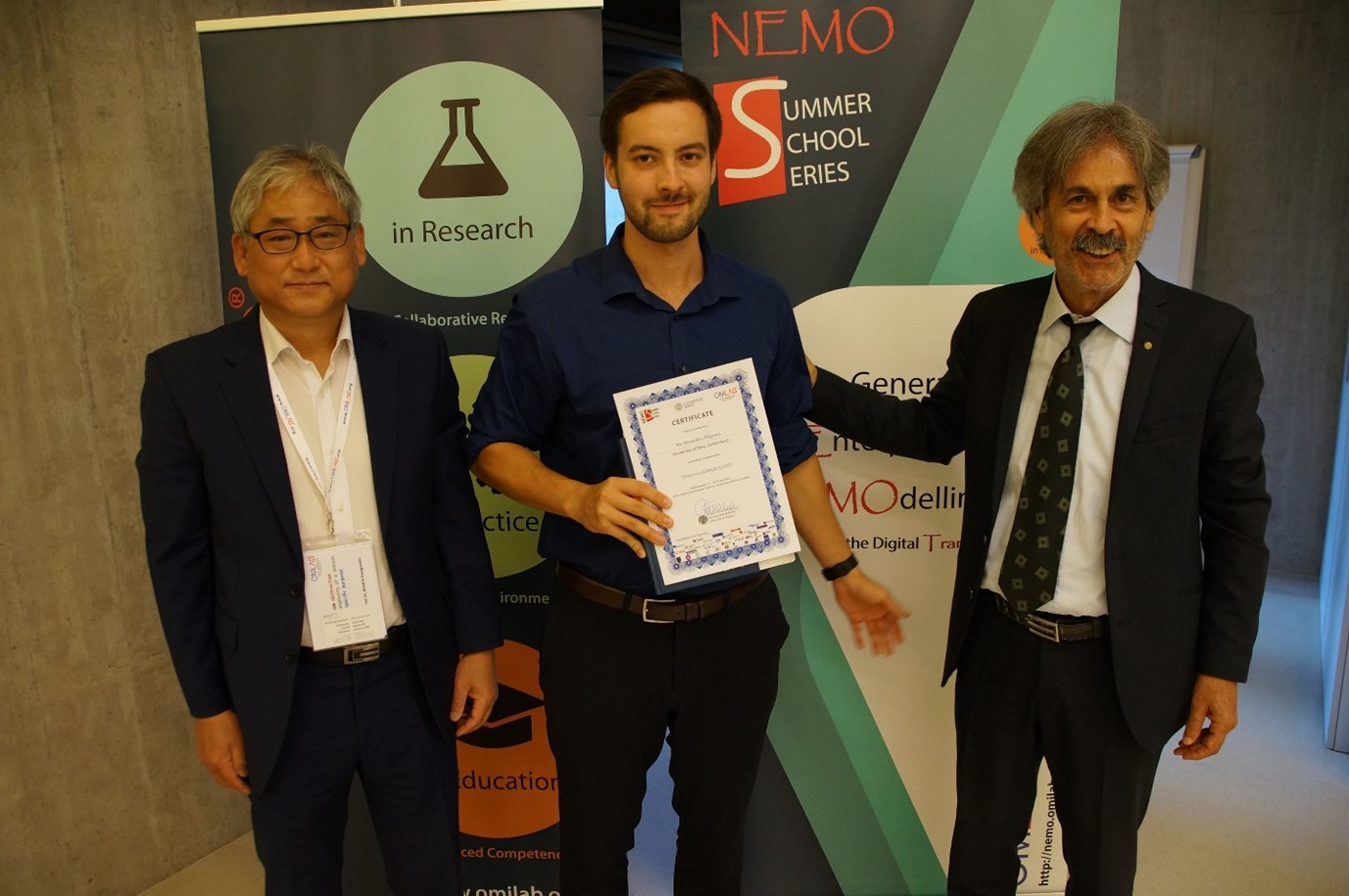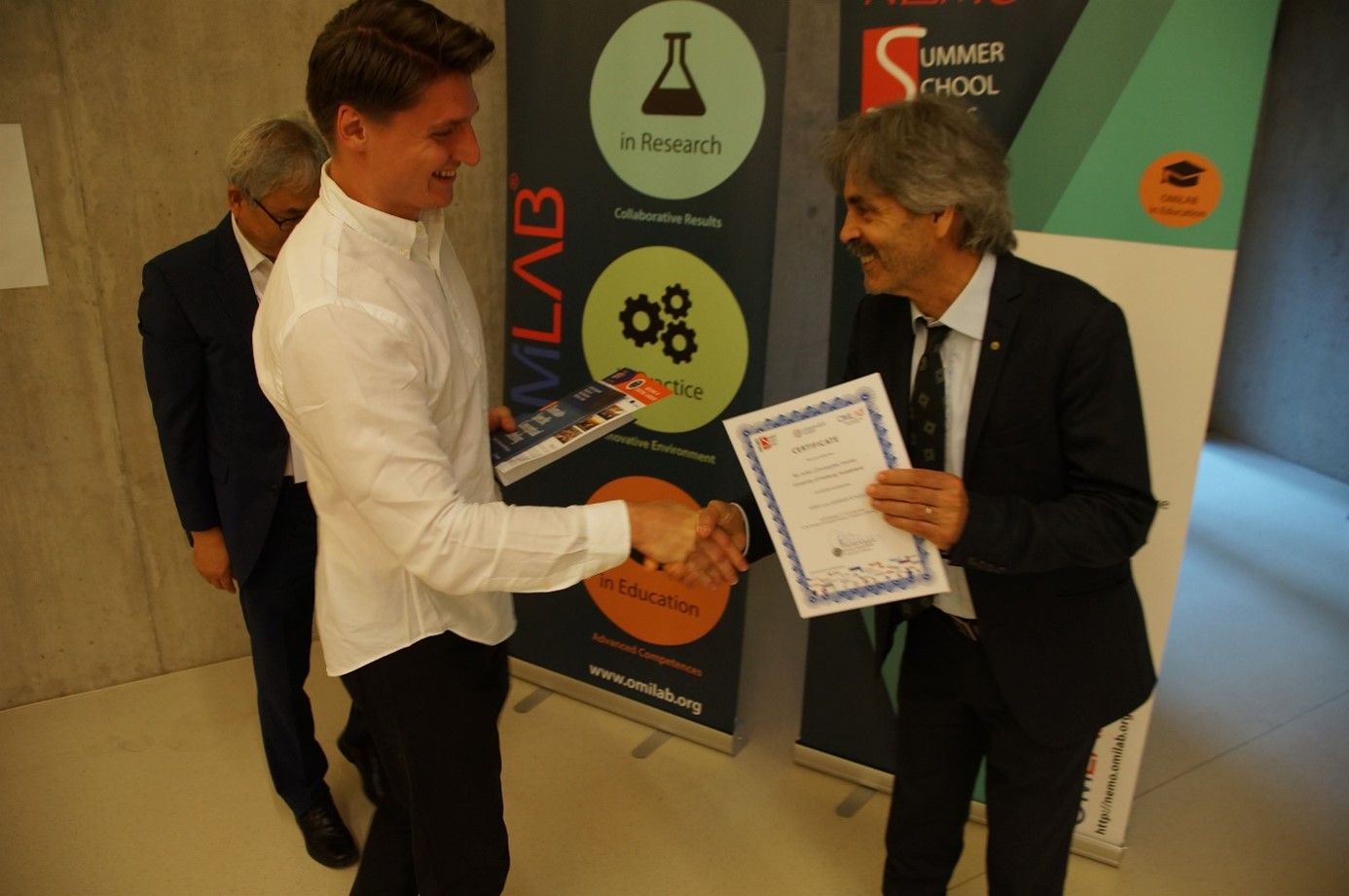This blogpost shares our experience at the NEMO Summer School, which we attended for two weeks in July 2022 at the University of Vienna. The school brought together an international community composed of academics and students from different areas of conceptual modelling. The primary focus of this event was on the design and implementation of enterprise digital twins and ecosystems. Forty speakers from all over the world presented highly interesting insights into their respective research topics. After the presentations, our understanding of this intriguing content was deepened while conversing with professors and colleagues after sessions, as well as during interactive training sessions. Now we would like to give you a brief overview of all that we learned.
Potential thanks to models
The evolution of how automobiles are designed was covered up to the current day to illustrate the use of digitization in developing and applying innovative ideas. The current design of even the most basic of models is remarkable, in that nearly all systems of a vehicle are becoming increasingly complex. For example, individual components such as the radio evolved into information systems that control many individual components of the vehicle. Today, it is no longer possible to isolate the control of many individual parts within a single system because the boundaries isolating one system from another are increasingly disappearing. Therefore, comprehensive digital tools are needed to develop and manage such complex and highly interconnected systems. A single change in one part can cause a myriad of modifications across the numerous inter-related systems that exist across the entire vehicle.
In this regard, we would like to quote a sentence by Professor Karagiannis, who is the Head of Research Group Knowledge Engineering at the University of Vienna and the co-founder of the NEMO Summer School: "We use abstraction to reduce complexity in a domain for a specific purpose." A model is created by abstracting a concept or activity from the real world. By definition, the model represents reality but includes only those parts that are relevant for the stakeholders and serves a specific purpose.
Although the word "model" is not often used in our daily vocabulary, models still occur quite frequently in our lives. For example, a business process diagram or something as complex as a network plan detailing the bus and train lines of the Canton of Fribourg, or as simple as a child’s drawing of her home can be considered as a model. Models are commonly represented visually, which helps humans to better understand a given problem or grasp the context of a specific situation. Moreover, when a model is a semantically rich, digital representation of a tangible object or intangible concept derived from the real world, it is called a "digital twin."
Furthermore, models help to create a common understanding between designers and across users. Not only is the model valuable, but stakeholders learn meaningful insights by creating or engaging with models. For models, the journey is also the destination. A presentation by Professor Kurt Sandkuhl referenced the great challenge of digital transformation for organizations. Enterprise models reflect the structure, information, resources, and processes of an organization to better understand the complex inter-dependencies of each of these elements. They also enable organizational stakeholders to identify and implement the necessary organizational transformations to achieve organizational effectiveness in reaching its stated goals.
After this introduction to models, many of the research topics presented illustrated the powerfulness in properly employing models to solve complex problems of organizational understanding, process implementation and optimization.
Use cases of models
After a personal welcome on Monday morning, we were greeted by a robot providing us with, a "Welcome to NEMO 2022". The robot's interactions with the participants, which also included voice control, were executed based on a model and did not require direct programming. This brings some advantages such as allowing the users to spend more time resolving non-technical questions.

Additional approaches were used to present how models can be used to configure IoT devices, regardless of the IoT platform to which it is connected. A research group at the University of Camerino, Italy, developed such a solution, making it possible to generate program code for different platforms based on a single, model-based specification. This model ensures interoperability while reducing a user's dependency on, and limitations from, a single platform.
Professor Hans-Georg Fill, from the University of Freiburg, presented during the second week. The topic covered those opportunities that arise when enterprise models and blockchain technology are combined. Further speakers described additional interesting model-based approaches within the area of process mining, data cleansing, business ecosystems, data asset monetization, and ontology-based enterprise modelling. In addition to those presentations made by academics, other presentations were made by prominent industry partners. This included private sector organizations such as Hilti AG, a manufacturer of construction tools and construction-related information technology products. Representatives of the digitally progressive city of Vienna presented their use of Artificial Intelligence (AI) to assess the condition of its roads.

During these two intensive weeks in Vienna, we did not only attend presentations, but we were also given the opportunity to develop our own Smart City scenario in groups. The development of the scenario started with a design thinking workshop supported by the Scene2Model tool. Additionally, during the Summer School we were introduced to the metamodeling platform ADOxx during practice sessions. This platform enables the implementation of new modelling languages.
In closing, we would like to emphasize that the event was a unique opportunity to learn about the cutting-edge research activities currently being conducted in other universities within the field of conceptual modelling. We also were able to broaden our own knowledge on conceptual modelling. Networking was explicitly encouraged and facilitated with long breaks in the mornings, a barbecue in the evening, and the opportunities created for performing group work. During the evenings and on weekends we undertook various activities within smaller groups in the beautiful, lively, and inspiring city of Vienna. Exploring this historic city revealed how combining art and science into a complex model of its many inter-related systems could allow the stakeholders, both residents and tourists, to mutually prosper by preserving the aesthetic beauty of this cultural highlight of the world.
On this occasion, we would like to thank the University of Fribourg, which made the Summer School in Vienna possible for us. Also, special thanks to the team of OMILAB, who organized the NEMO Summer School perfectly.


Alexandru Filipescu in the center

Julian Steiner in the center
Authors: Alexandru Filipescu and Julian Steiner
